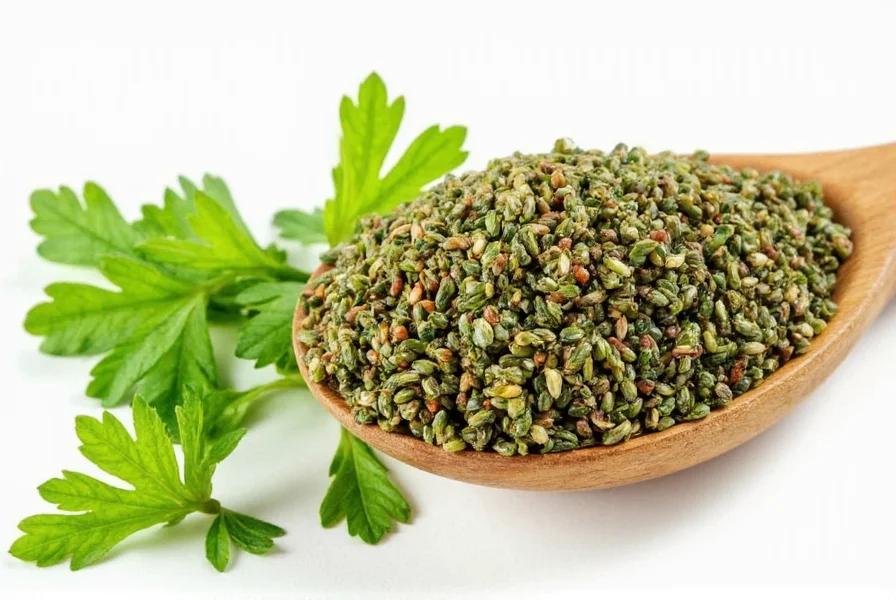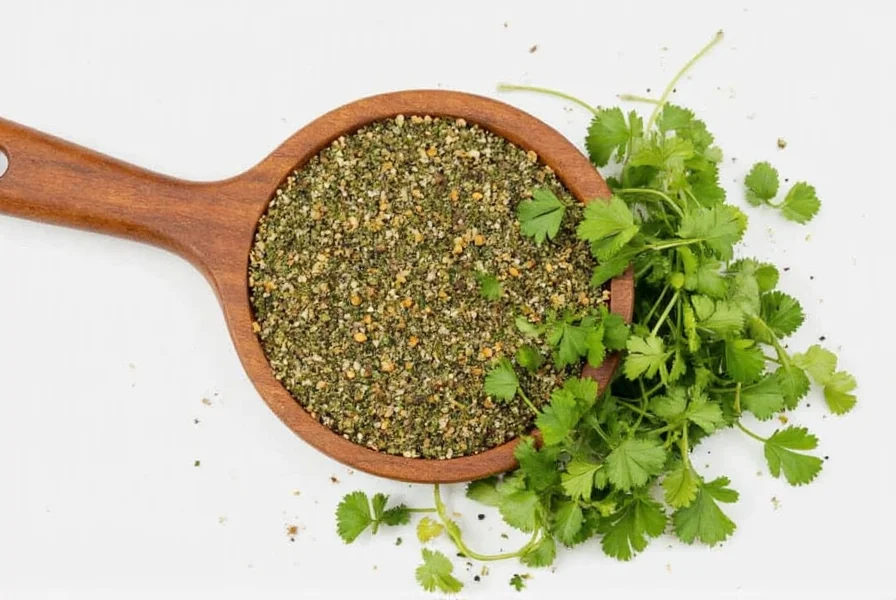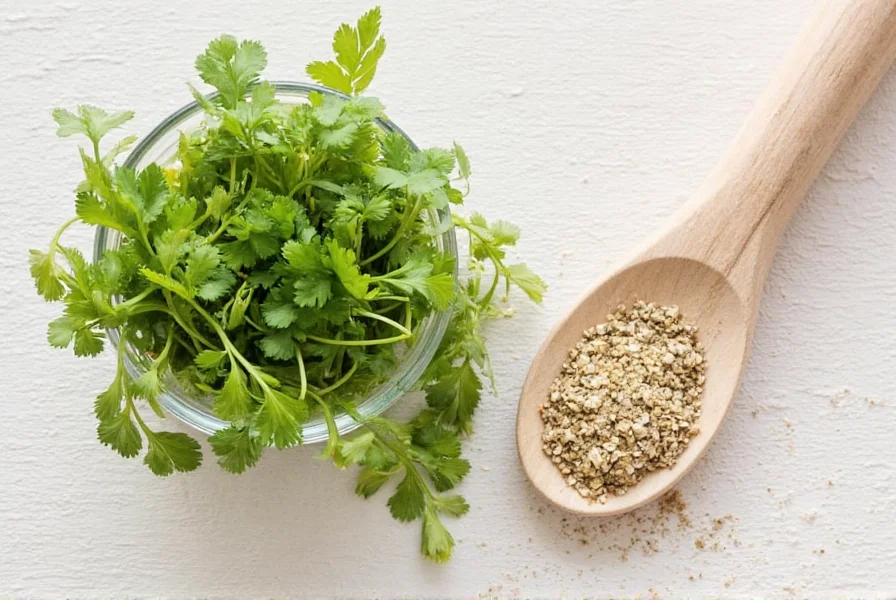Running out of coriander while cooking can derail your recipe, but understanding proper substitutes ensures your dishes maintain their intended flavor profile. Coriander (cilantro in the Americas) provides a bright, citrusy note that's essential in many global cuisines from Mexican salsas to Indian curries. When you need a coriander replacement, selecting the right alternative depends on whether you're substituting fresh leaves or dried seeds, and the specific dish you're preparing.
Understanding Coriander's Unique Flavor Profile
Before exploring coriander replacement options, it's crucial to understand what makes coriander distinctive. Fresh coriander leaves contain aldehydes that create their characteristic citrusy, slightly peppery flavor. This compound is also why some people perceive coriander as soapy (a genetic trait affecting approximately 21% of the population). Dried coriander seeds have a warmer, citrus-tinged spice profile with lemony notes and subtle sage undertones.
Best Fresh Coriander Substitutes
When your recipe calls for fresh coriander leaves (cilantro), consider these alternatives based on availability and dish requirements:
Parsley as a Coriander Replacement
Flat-leaf (Italian) parsley offers the closest visual match and a mild herbal flavor that won't overpower dishes. While lacking coriander's citrus notes, it provides similar texture and color. Use equal amounts of parsley when replacing coriander in:
- Garnishes for soups and stews
- Middle Eastern tabbouleh or fattoush salads
- As a base for chimichurri when combined with vinegar and garlic
Culantro: The Closest Flavor Match
Culantro (Eryngium foetidum), often called Mexican coriander or spiny coriander, has a stronger, more pungent flavor than regular coriander but shares similar chemical compounds. It works exceptionally well as a coriander replacement in:
- Caribbean and Latin American salsas and mojos
- Soups requiring long cooking times (it holds up better than coriander)
- When you need a more robust herbal note
Use about half the amount of culantro compared to coriander, as its flavor is more intense.
Basil and Lemon Combination
For recipes where coriander's citrus notes are essential, combine equal parts fresh basil with a squeeze of lemon juice. This coriander replacement works particularly well in:
- Thai and Vietnamese dishes where coriander is traditional
- Fish preparations needing bright herbal notes
- When making herb-infused oils or vinegars
Dill as an Alternative
Dill provides a different but complementary flavor profile with its grassy, slightly anise-like taste. It serves as an acceptable coriander replacement in:
- Yogurt-based sauces and raitas
- Fish dishes where you want a different herbal note
- When coriander's citrus notes aren't critical to the dish
| Substitute | Best For | Ratio to Coriander | Flavor Notes |
|---|---|---|---|
| Parsley | Garnishes, mild dishes | 1:1 | Milder, less citrusy |
| Culantro | Salsas, cooked dishes | 1:2 (use half) | Stronger, more pungent |
| Basil + Lemon | Asian cuisine, fish | 1:1 basil + 1 tsp lemon | Citrusy alternative |
| Dill | Yogurt sauces, fish | 1:1 | Grassy, anise notes |
| Tarragon | French cuisine, dressings | 1:1.5 (use less) | Anise-like, subtle |
Dried Coriander Seed Substitutes
When your recipe requires dried coriander seeds or ground coriander, these alternatives work best:
Cumin for Earthy Dishes
Ground cumin makes an excellent dried coriander substitute in spice blends and earthy dishes. Use 3/4 teaspoon cumin for every 1 teaspoon of coriander. This coriander replacement works particularly well in:
- Middle Eastern spice mixes like za'atar
- Bean dishes and chili recipes
- When making harissa or other North African pastes
Coriander Seeds with Paprika
For the most accurate dried coriander replacement, toast coriander seeds (if available) and grind them yourself, adding a pinch of smoked paprika to enhance the citrus notes. This approach preserves the authentic flavor profile better than pre-ground alternatives.

Dish-Specific Coriander Replacement Recommendations
The ideal coriander replacement varies significantly by cuisine and preparation method. Understanding what to use instead of coriander in specific recipes ensures your dishes maintain their intended character.
For Mexican Salsas and Guacamole
When making what to use instead of coriander in Mexican dishes, try this combination:
- Equal parts flat-leaf parsley and mint
- Add 1/4 teaspoon lime zest per tablespoon of substitute
- Include a small pinch of celery seed for complexity
This coriander replacement maintains the fresh, bright quality essential to authentic Mexican flavors.
For Indian Curries and Chutneys
Indian cuisine often relies on coriander's distinctive flavor. For the best coriander replacement in Indian dishes:
- Use fresh curry leaves when available (1:1 ratio)
- Combine parsley with a few fresh mint leaves
- Add 1/8 teaspoon ground coriander seed per tablespoon of fresh substitute
This approach preserves the complex flavor profile required in traditional Indian cooking.
For Thai and Vietnamese Cuisine
Asian recipes frequently use coriander as both garnish and flavor component. When seeking a coriander replacement for Asian dishes:
- Use Thai basil as the primary substitute (not sweet basil)
- Add a small amount of lemon balm for citrus notes
- Include a few sprigs of mint for freshness

When Not to Substitute Coriander
Certain dishes rely so heavily on coriander's unique flavor that substitutes significantly alter the character. These include:
- Traditional chimichurri sauce (coriander is essential)
- Certain Indian chutneys like coriander-mint chutney
- Some Middle Eastern za'atar blends
- Specific Thai curry pastes
In these cases, consider modifying your recipe rather than substituting, or plan ahead by freezing fresh coriander in oil for future use.
Preserving Fresh Coriander to Avoid Substitution Needs
The best coriander replacement is having fresh coriander available. Extend its shelf life with these methods:
- Store stems in water like cut flowers, covered with a plastic bag in the refrigerator
- Freeze leaves in ice cube trays with water or oil
- Dry leaves for later use as a more intense seasoning
- Plant coriander in a small pot on your windowsill for continuous harvest
Frequently Asked Questions
Can I use dried coriander instead of fresh in recipes?
Yes, but with adjustments. Use one teaspoon of dried coriander for every tablespoon of fresh coriander required. Remember that dried coriander has a warmer, less citrusy flavor, so you may want to add a squeeze of lemon juice to recipes to compensate for the missing brightness.
What's the best coriander substitute for curry?
For Indian curries, the best coriander replacement combines fresh curry leaves with flat-leaf parsley and a small amount of ground coriander seed. Use equal parts curry leaves and parsley, plus 1/8 teaspoon ground coriander seed per tablespoon of fresh herb. This maintains the complex flavor profile essential to authentic curry dishes.
Why does coriander taste like soap to some people?
Approximately 21% of people have a genetic variation that causes them to perceive certain aldehydes in coriander as soapy. If you're among those who experience this, try culantro which contains different compounds but provides similar culinary functionality, or use the parsley and lemon combination as your primary coriander replacement.
Can I substitute cilantro for coriander seeds?
No, cilantro (fresh coriander leaves) and coriander seeds come from the same plant but have completely different flavor profiles. Cilantro provides bright, citrusy notes while coriander seeds offer warm, lemony spice. For dried coriander seed replacement, use ground cumin or a combination of coriander seeds with a pinch of paprika rather than fresh cilantro.
How can I make my coriander substitute taste more authentic?
To enhance your coriander replacement's authenticity, add complementary flavor elements: a small amount of lemon zest mimics coriander's citrus notes, while a pinch of celery seed provides the subtle grassy undertones. For cooked dishes, add your substitute toward the end of cooking to preserve volatile flavor compounds that mimic fresh coriander's profile.











 浙公网安备
33010002000092号
浙公网安备
33010002000092号 浙B2-20120091-4
浙B2-20120091-4